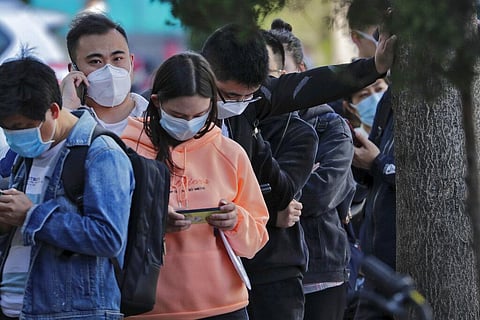

As the onslaught of Covid-19 rages across the world, Southeast Asia is addressing the pandemic from a domestic and regional perspective. While there have been accusations and counter-accusations elsewhere, Southeast Asia, through ASEAN and its dialogue partners, have made efforts to address the pandemic at the multilateral level. Covid-19 has laid tremendous stresses on a highly globalised world, pushing countries to adapt to a ‘new normal’. While several countries have opted for nationwide lockdowns and social distancing norms domestically, it is also critical to understand the regional efforts.
Southeast Asia is driven by the official processes of the ASEAN multilateral frameworks regionally. The core underpinnings of regionalism are based on a series of well-entrenched official practices, carried out through nearly 1,500 meetings of officials and diplomats annually, who run the multilateral processes related to the workings of the organisation. These annual interactions have been set aside because of the spread of the pandemic.
One of the most onerous tasks has been for Vietnam, the Chair of ASEAN for the year 2020. Not only has Vietnam had to handle the outbreak of the pandemic domestically, it has also had to orchestrate the ASEAN responses and continue to look at addressing joint approaches with its extended dialogue partners, including major players such as the US and China. Vietnam’s objective as ASEAN Chair has been to focus on promoting the group’s collective response at the regional level.
These responses relate to three core areas—first, information sharing was critical to address the number of cases and the provisions for treatment of the infected; second, ensuring the implementation of strictures that helped in the prevention of movement at national borders and ports of entry; third, addressing the evacuation and return of citizens who were stranded in other countries within Southeast Asia and elsewhere.
ASEAN’s responses are on two broad parallels—at the intra-ASEAN level among the member countries and at the regional level with its dialogue partners. At the intra-ASEAN level, there have been a series of meetings to address the pandemic. In February 2020, the ASEAN Defence Ministers issued a joint statement, highlighting the coronavirus outbreak as a ‘public health emergency of international concern’ (PHEIC) endorsing the WHO. It called for promoting defence cooperation, especially through military medical collaboration. More importantly, the joint statement sought to reinforce the ‘spirit of a cohesive and responsive ASEAN Community’.
This was followed by an ASEAN working group meeting on 31 March 2020, which focused on measures to address the spread of Covid-19. On 1 April 2020, the ASEAN-US meeting, through video conferencing, was a critical step in reinvigorating their ties. The US gave $18.3 million in assistance to the ASEAN region to fight the outbreak. Southeast Asia as a region has faced health and humanitarian issues and has received $3.5 billion in assistance from the US over a period of two decades. Apart from the financial assistance, the US and ASEAN have attempted to exchange information through the workings of agencies such as the US Centers for Disease Control and Prevention (CDC), to address best practices and options during the pandemic.
On 14 April 2020, a special ASEAN Summit on Covid-19 was convened to address regional responses to the pandemic. Aimed at directing the future course of action, member states discussed options to support one another in ensuring a steady supply of medical equipment, especially the availability of personal protective equipment (PPE) for front-line medical workers. The summit also addressed concerns of uninterrupted supply of pharmaceutical products and medicines. Shortages of medicines and food supplies are critical concerns among all nations, but for the ASEAN region where economic disparities divide the members, this concern critically addresses regional developmental gaps.
The special summit was closely followed by the ASEAN+3 meeting with dialogue partners across the East Asian region—China, Japan and South Korea. This meeting’s core agenda was procuring a continuous flow of merchandise and supplies—both medical and food. One of the concerns of the ASEAN+3 meeting was the impact Covid-19 could have on the socio-economic situation within countries of the region. Concerns relating to political instability due to socio-economic factors in the region are critical for these nations.
Even within the context of addressing the pandemic there has been increased reference by members of parliament among the ASEAN nations to ensure human rights remains at the forefront of any government action directed to address the pandemic. Promoting the ASEAN Coordinating Center for Humanitarian Assistance and Disaster Management was seen as an effective measure to coordinate the activities through intergovernmental agencies of the region.
Finally, the meeting also addressed the need for joint funding for the region to ensure members were able to access funds during this crucial time. ASEAN’s record of success on issues of non-traditional security has been more effective than on traditional security matters. The gap between policy and implementation will need to be addressed properly.
Shankari Sundararaman
Professor at School of International Studies, JNU, New Delhi
(shankari@mail.jnu.ac.in)